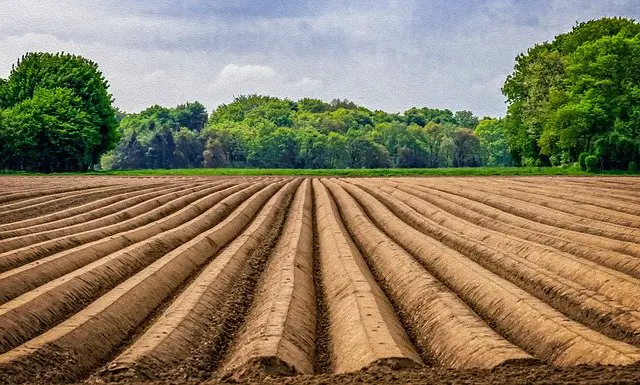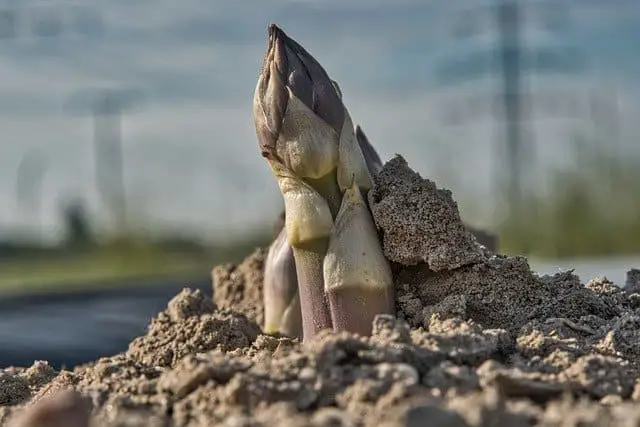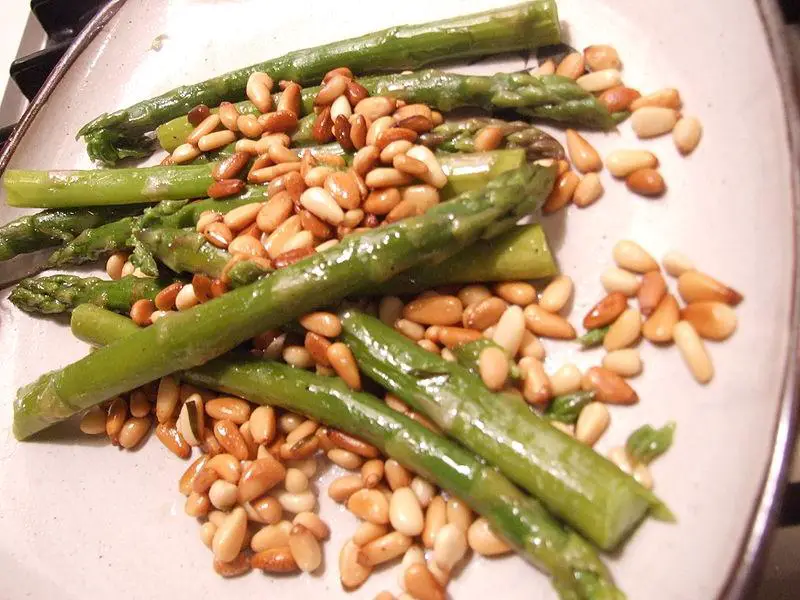Tips on growing asparagus:

Asparagus is a very popular vegetable and increasingly so in our age; for that reason alone it is important to know how to grow asparagus if you are at all interested in gardening, and have an area of ground to grow vegetables in.
Asparagus particularly suits the raised bed type of gardening as it has to be grown in a well-drained area, as is the kind you will find in a properly laid out raised bed garden.
Being rich in vitamins B, C, calcium and iron; asparagus is definitely one of the most nutritional vegetables as well as one of the most looked forward to early crops of the season. Asparagus soups and other recipes are in good demand in the early springtime!
How To Plant Asparagus
When planting asparagus you should always bear in mind that it will grow in the one area for up to twenty years, and so it is wise to think ahead in this respect.
Plant in full sun if possible – even though they can tolerate a little shed if needs be – in ground that has been well dug over with well-rotted manure.
As mentioned earlier, make sure that the ground is well drained otherwise the asparagus will rot at the stems if you have any period of heavy rain. Beds should be about four feet wide, and all weed roots etc removed from the soil.

Asparagus plants are both male and female, however the male plants are more productive since they do not have to expend energy on seeds. For this reason varieties such as ‘Jersey giant’ or ‘jersey knight’ which produce mainly male plants, is a good choice for a more productive harvest.
If choosing a primarily all-male plant then something in the region of two dozen plants is usually adequate for a family of four. Double that amount for other varieties, if you are after a high yield.
When planting then you will get off to a better start if you purchase one year old crowns, as they tend to transplant without too much trouble.
Two year old crowns on the other hand do not transplant quite as well in general. Plant them out as soon as possible, or wrap in damp newspaper for a short period if necessary. Plant the shoots in trenches about 12 inches wide and 6 inches deep, in a prepared bed.
When this is all prepared the place the crowns about 18 (450 mm) inches apart and top them with 2-3 inches of soil. In another two weeks or so then the soil can be raised by another inch or two. This is continued until there is a slight mound in the soil around your crowns, as this will level out with settling.
Caring for asparagus
In the early stages of a new asparagus bed then there is a little more to do in the area of general care. In order to reduce the weeding it is advisable to mulch the whole area around the asparagus bed, this will allow the asparagus to grow without having to compete with weeds, and save yourself a little time weeding.
In time, around two years, the asparagus will become well established and its own root system will crowd out all but the most persistent of weeds.
Feed your asparagus in the early spring to encourage the new growth and maybe later on in the season.
At the end of the growing season just leave the foliage to wither and die, as this provides winter protection for the plants. In the springtime however remove this dead material to allow for the new shoots to appear, and also to remove any chance of disease from the old foliage.
Asparagus Pests

All vegetables need some kind of pest control in order to survive and flourish. Watch out for the asparagus beetle, they are a metallic color with either white or yellow spots on their backs.
They will chew on the asparagus spears and lay eggs on the leaves, which in turn will hatch into larvae further destroy the plant. Control is best done by taking away any infected leaves, and spraying with an insecticidal solution.
Watch out also for the asparagus miner . This leaves tunnels along the foliage of the stalks, which should be removed at the first sign of attack and destroyed.
. This leaves tunnels along the foliage of the stalks, which should be removed at the first sign of attack and destroyed.
When To Pick Asparagus
For the first two years, the asparagus should not be harvested. This enables the plant to concentrate on producing a strong root system, which will reap dividends in the following years.
In the third season of growth then you can pick the shoots over a four or 5 week period, then leave to rest. On the fourth year of growing you may extend this to 8 or 9 weeks.
Pick your asparagus by cutting with a sharp knife just below the ground surface.



